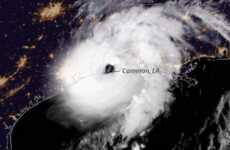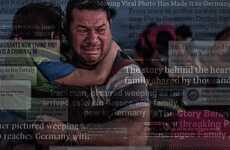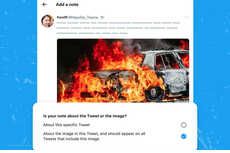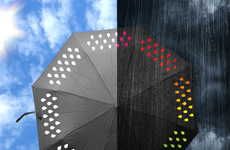
The Fake Hurricane Sandy Photos are Trolling the Internet
Cody Turner — October 30, 2012 — Pop Culture
References: buzzfeed
As Hurricane Sandy approaches, many are turning to the Internet to get their coverage of the storm; unfortunately there is a large amount of fake Hurricane Sandy photos being used. It’s not surprising that this is happening, but it’s also not that easy to differentiate one storm from another when it comes to photographs.
Luckily, some of the photos that are going around right now can be easily spotted as fake. For instance, there is a large amount of snapshots from the movie The Perfect Storm and The Day After Tomorrow, where New York City is being taken over by a giant flood wave.
Also, not so cleverly people have been photoshopping in photos of Godzilla rising up from the sea during the storm. So keep your eyes open to decipher the real photos from the fake ones.
Luckily, some of the photos that are going around right now can be easily spotted as fake. For instance, there is a large amount of snapshots from the movie The Perfect Storm and The Day After Tomorrow, where New York City is being taken over by a giant flood wave.
Also, not so cleverly people have been photoshopping in photos of Godzilla rising up from the sea during the storm. So keep your eyes open to decipher the real photos from the fake ones.
Trend Themes
1. Fake Hurricane Photos - Businesses and news outlets can create innovative fact-checking tools or AI models to detect and flag fake hurricane photos.
2. Digital Content Verification - Digital forensic companies can disrupt the market by providing quick and efficient verification services for news outlets, social media platforms, and individuals.
3. Social Media Responsibility - There is potential for social media platforms to develop more strict policies and guidelines to prevent the spread of fake news during natural disasters.
Industry Implications
1. Media - Media outlets can capitalize on creating trust and credibility with their audience by investing in reliable fact-checking and authentication processes for digital images.
2. Technology - There is opportunity for technology companies to develop AI-driven tools, algorithms and verification models to detect fake hurricane photos and other types of fake news.
3. Social Media - Social media platforms can proactively develop stronger policies and guidelines for verifying sources for content and avoid spreading fake news during natural disasters.
6.8
Score
Popularity
Activity
Freshness























